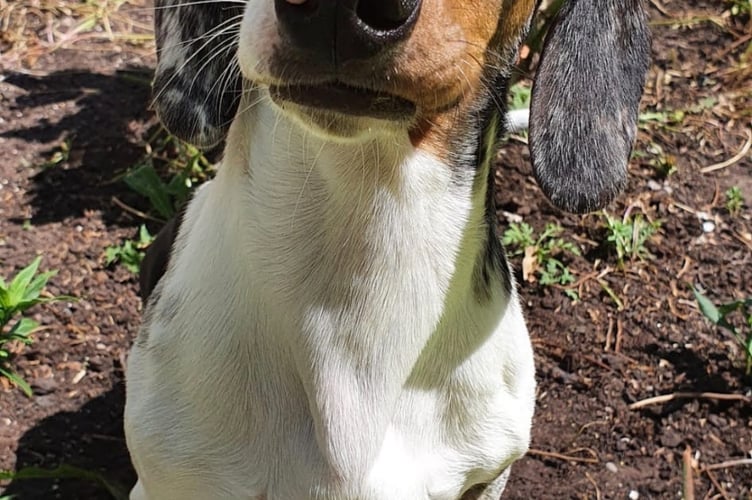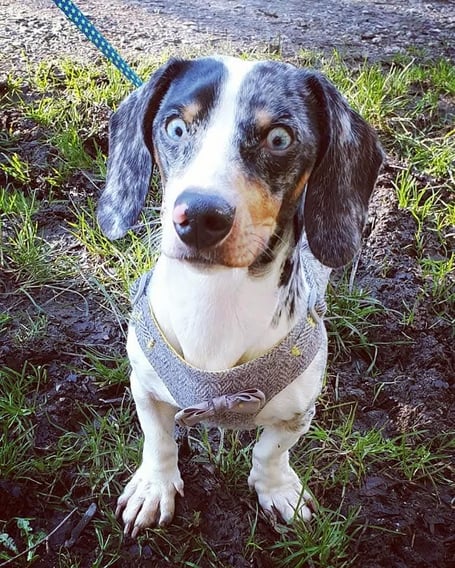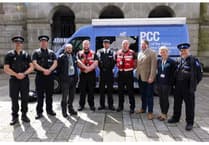There’s something remarkable about a Dachshund isn’t there? My children never fail to excitedly shout “SAUSAGE DOG!!!” when they see one! Dachshunds have also got great personalities – hence they have become a very popular breed in recent years. Their long backs give them a distinctive appearance but unfortunately mean they suffer high levels of intervertebral disc disease (IVDD). The majority of Dachshunds will have degeneration of their intervertebral discs by 1-3 years of age and around 1 in 4 will suffer clinical problems as a result in their lifetime.
Bertie must be one of the longest sausages we’ve ever seen at South Moor Vets! He’s a very friendly boy and a much loved pet, so his owners were really worried when he started showing signs of weakness on his back legs. He was taken to Bristol Vet School and examined by a specialist, but as he was still able to walk they decided to try rest and see if he recovered. A few weeks later his signs worsened and he was no longer able to walk, and had very little movement in his back legs. He hadn’t been to South Moor previously but his owner’s son was a client here and asked if we could help – of course we could, and as an RCVS recognised advanced practitioner in surgery, I have experience operating on these cases. Bertie came to see us and we were able to identify spinal cord compression as the most likely cause of Bertie’s signs and recommended a CT scan to confirm. The scan showed Bertie had a large disc extrusion (often referred to as a ‘slipped disc’) that was compressing his spinal cord to 10% of its normal size.

Many dogs with intervertebral disc disease will improve with rest and time, but these had already been tried in Bertie’s case and his spinal compression was severe, so we advised surgery to relieve the compression. We performed a ‘hemilaminectomy’ procedure which involves removing a window of bone from around the spinal cord at the level of compression, and carefully removing the extruded disc material. This is very intricate surgery that requires a lot of patience, and specialised surgical equipment. We perform a lot of advanced surgery at our Ivybridge branch and have the facilities and equipment required to perform these procedures and care for the patients afterwards.
Bertie stayed in hospital over the weekend for pain relief and nursing care. The spinal cord is often quite bruised after this kind of injury so for the first week he was very quiet and his back legs were still weak, but then suddenly made a big improvement and was able to walk again, albeit a little drunkenly. He made rapid progress from that point and became stronger and more coordinated and is now back to his normal self, playing and running around like mad – Go Bertie!
We are lucky to have advanced practitioners in different fields at South Moor, which enables us to offer treatments that would otherwise only be available at distant referral centres. We offer a surgical referral service to other local practices so they can refer cases such as Bertie’s to see our team here as well – if you think your pet might benefit from a referral, ask your vet to get in touch and we will be happy to help.





Comments
This article has no comments yet. Be the first to leave a comment.